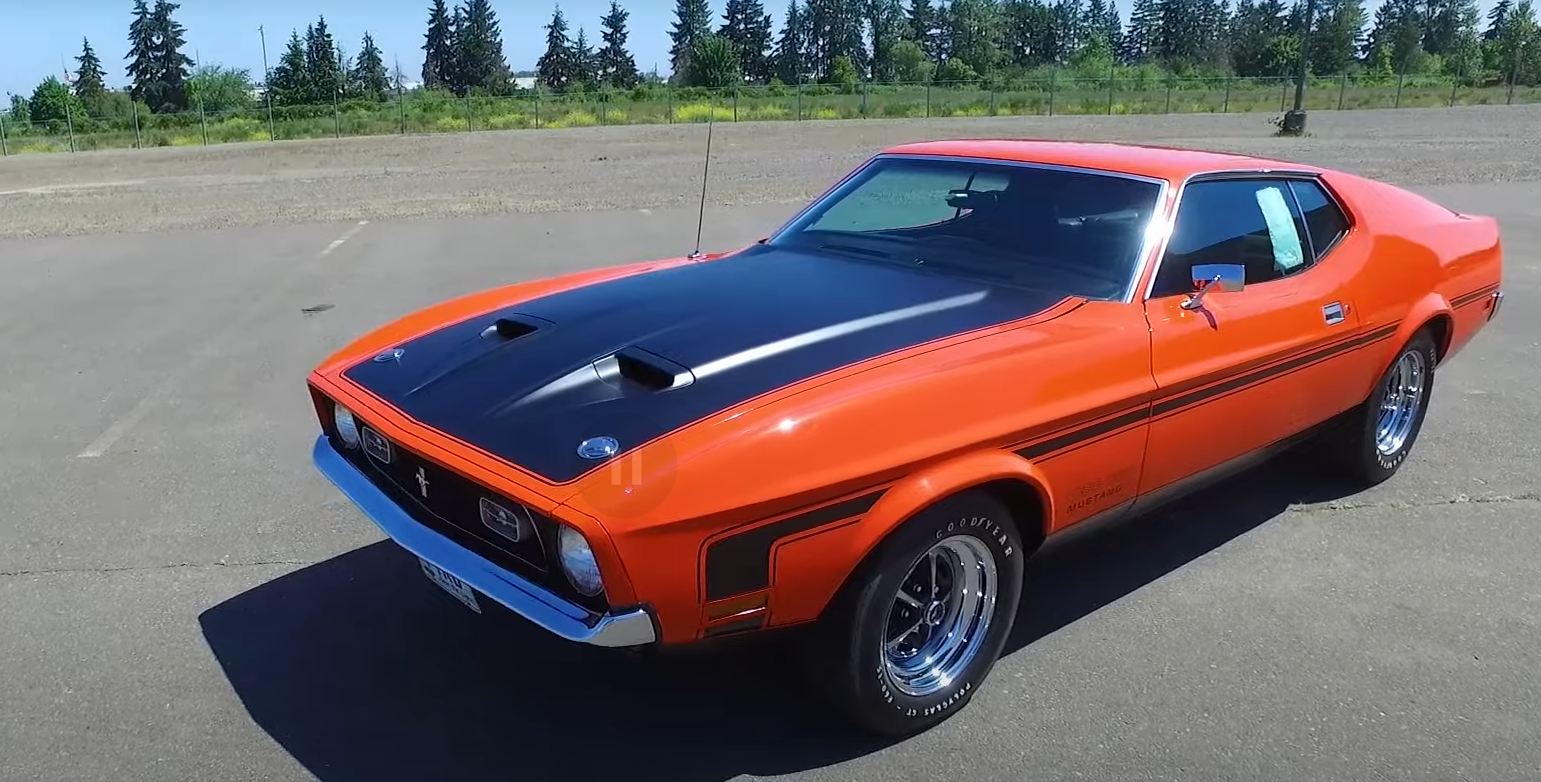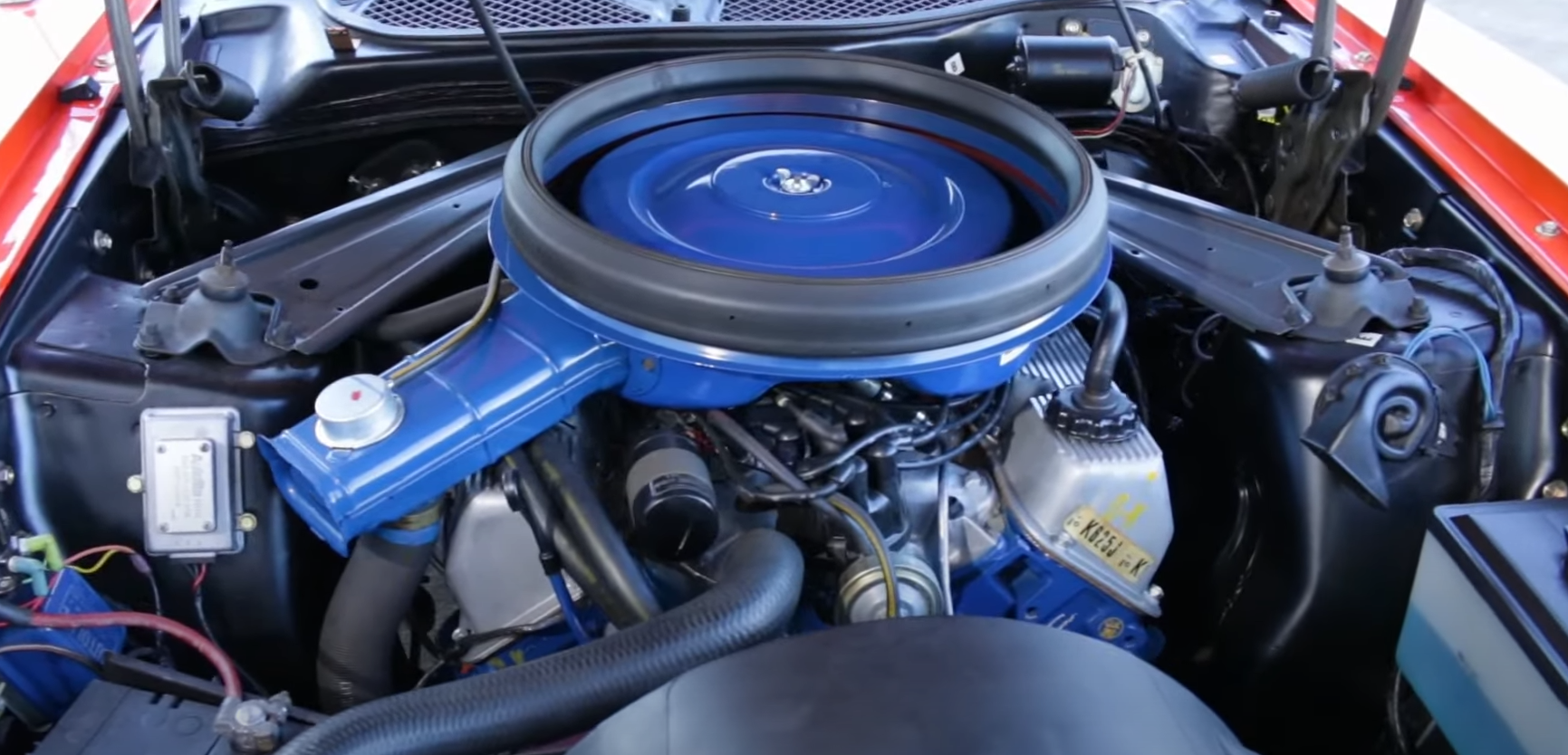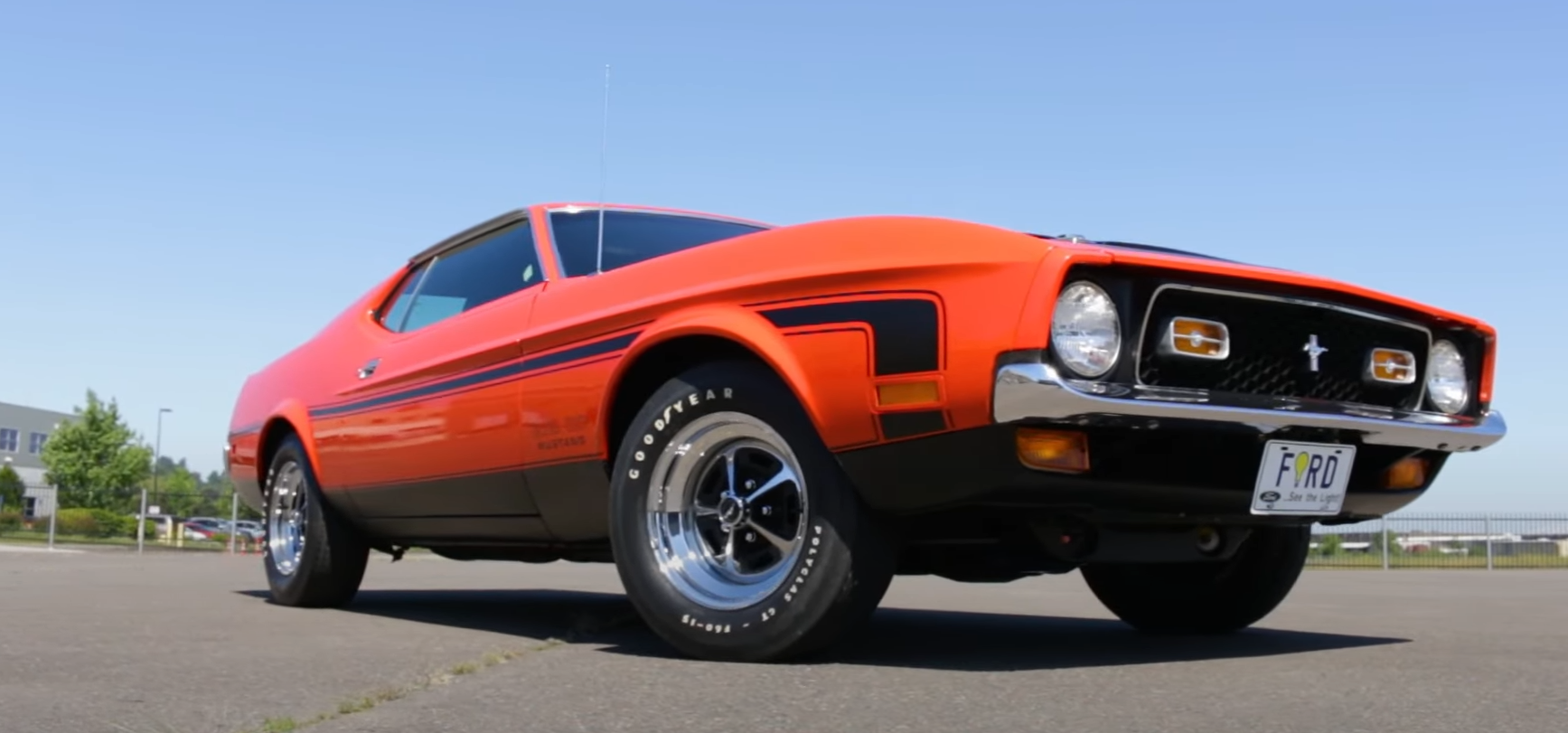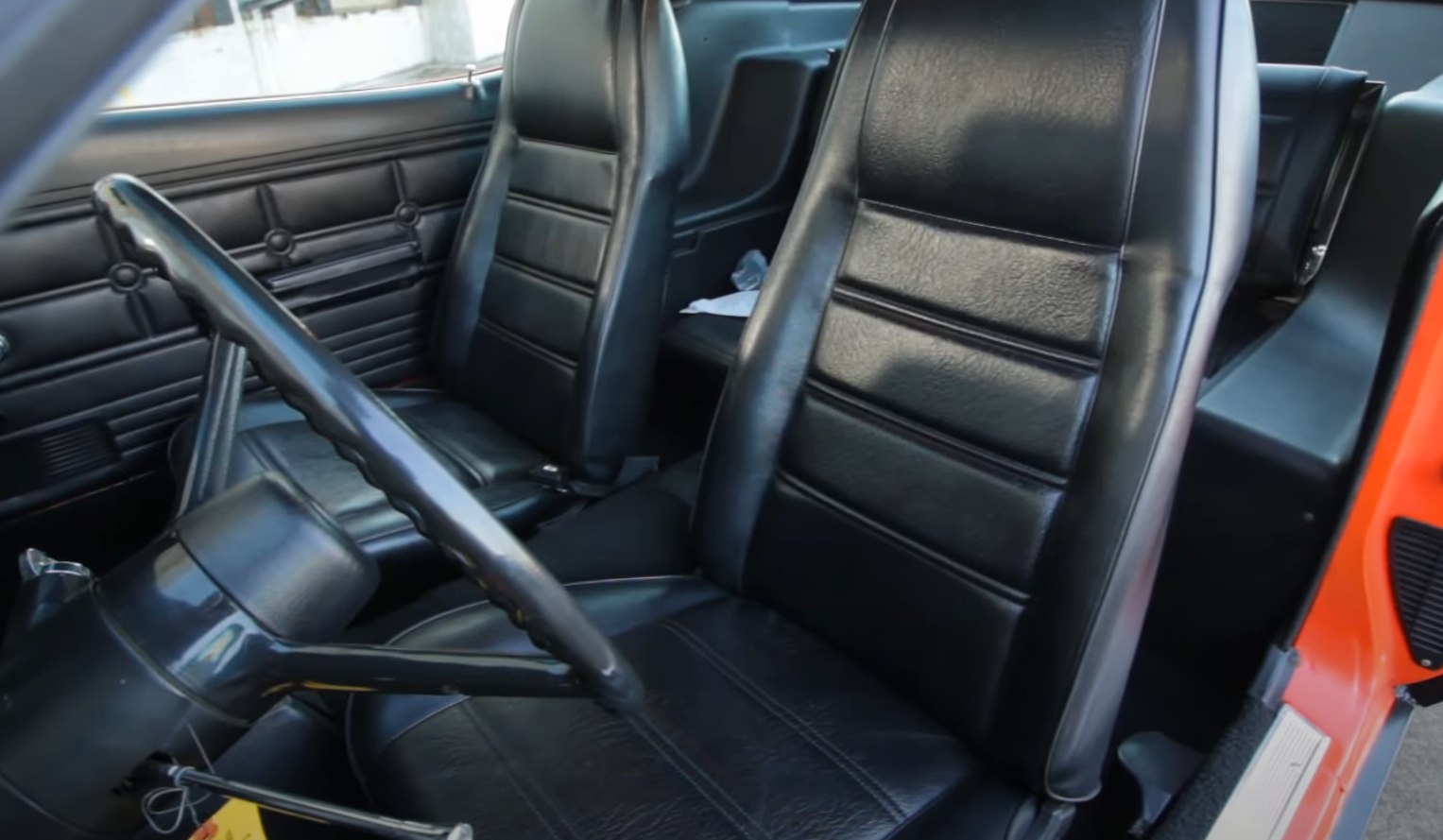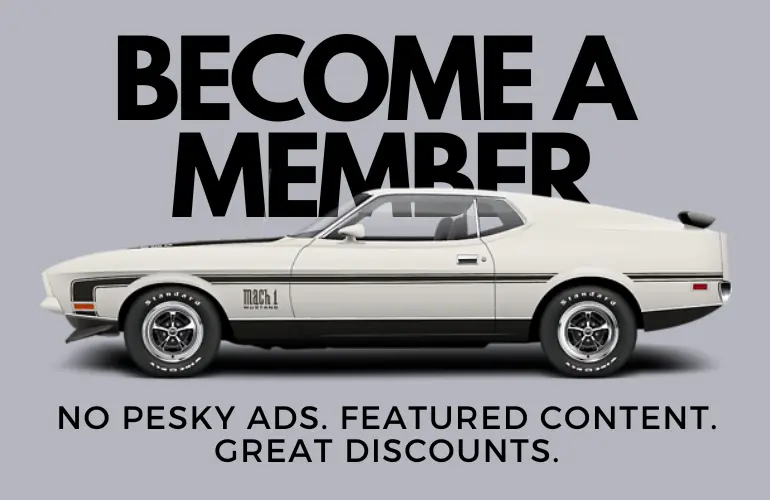The 1971 Ford Mustang Boss 351 marked a turning point for the Mustang lineup. Larger and heavier than earlier models, it was designed to meet the needs of buyers looking for more space without giving up the sporty appeal of the car. At the same time, new regulations and higher insurance costs were beginning to affect performance cars, making the Boss 351 one of the last strong examples of the muscle car era.
Powered by a high-compression 351 Cleveland V8, the Boss 351 delivered impressive horsepower and torque for its size. With a four-speed manual transmission, competition suspension, and aggressive styling, it stood out as both a capable performer and a striking design. Today, its rarity and originality give it added historical value, making it a significant model in Mustang history.
Key Takeaways
- The car combined larger dimensions with strong performance.
- It featured a powerful engine, tuned suspension, and bold styling.
- Its originality and limited production make it highly collectible.
1971 Ford Mustang Boss 351 Overview
New Shape and Market Role
The 1971 Mustang grew in size, becoming longer, wider, and heavier than earlier versions. Ford aimed this redesign at buyers who wanted a sporty car but also needed more space for family use. At the same time, the company promoted the Mustang as a lower-cost alternative to European performance cars.
Despite the larger body and a changing market with stricter emissions and rising insurance costs, the Boss 351 stood out. It carried a 351 Cleveland engine with 330 horsepower and 370 lb-ft of torque, backed by a 4-speed manual transmission and 3.91 Traction-Lok rear gears. Standard equipment included a competition suspension with front and rear sway bars, power front disc brakes, and staggered rear shocks.
Key features included:
- Exterior styling: blacked-out hood, Ram Air scoops, honeycomb grille, and Boss 351 side stripes
- Interior details: high-back bucket seats, center dash gauges, and optional fold-down rear seat
- Wheels and tires: stamped steel or optional Magnum 500 wheels with F60-15 tires
Changes from Earlier Boss Models
By 1971, the Boss 302 and Boss 429 models were no longer offered. The Boss 351 replaced them with a small-block engine that delivered performance close to big-block territory.
| Model | Engine | Horsepower | Transmission | Notes |
|---|---|---|---|---|
| Boss 302 (1970) | 302 V8 | 290 hp | 4-speed manual | High-revving small-block |
| Boss 429 (1970) | 429 V8 | 375 hp | 4-speed manual | Built for NASCAR homologation |
| Boss 351 (1971) | 351 Cleveland V8 | 330 hp | 4-speed manual | Strong torque, no drivetrain options |
While the Mach 1 could be ordered with a 429 Cobra Jet, the Boss 351 came only one way: with the 351 Cleveland, solid-lifter cam, aluminum intake, and factory Holley carburetor setup. This combination gave it mid-13 second quarter-mile times, making it competitive with heavier big-block Mustangs of the same year.
The Boss 351 package balanced performance with a unique look, marking the last true high-compression small-block Mustang before industry power levels began to fall.
Engine and Performance
351 Cleveland V8 Details
The 1971 Boss 351 came with a 351 cubic-inch Cleveland V8 designed for high output. It featured an 11.7:1 compression ratio, an aluminum intake manifold, and a 750 CFM Autolite carburetor. Solid lifter camshafts and large-valve cylinder heads allowed strong airflow. The engine produced 330 horsepower at 5,400 RPM and 370 lb-ft of torque at 4,000 RPM, numbers that rivaled many larger big-block engines.
Key components included:
- Forged connecting rods with 3/8-inch bolts
- Nodular cast iron crankshaft with four-bolt main caps
- High-flow Cleveland cylinder heads
Acceleration and Quarter-Mile Results
Weighing about 3,400 pounds, the Boss 351 delivered performance that placed it among the quickest Mustangs of its era. It could reach 0–60 mph in the low 6-second range and run the quarter mile in the mid-13s. These times put it just behind heavier models equipped with the 429 Super Cobra Jet.
Drivetrain and Gearbox Setup
All Boss 351 models came with the same wide-ratio Toploader 4-speed manual transmission, shifted with a Hurst T-handle. A heavy-duty clutch and 9-inch Traction-Lok rear axle with 3.91 gears provided strong launches.
The suspension setup included:
- Front and rear sway bars
- Stiffer springs and shocks
- Staggered rear shocks for added stability
Braking was handled by 11.3-inch front power discs and oversized rear drums. Factory wheels were either stamped steel with caps or optional Magnum 500 chrome wheels, both wrapped in F60-15 Wide Oval tires.
Chassis and Suspension
Performance Handling Setup
The Boss 351 came with a suspension package designed for sharper control. It used front and rear sway bars, stiffer springs, and matched shocks to keep the car stable at speed. The rear shocks were mounted in a staggered layout, which helped reduce wheel hop under hard acceleration. This setup gave the heavy Mustang more agility than expected for its size.
Brake System and Wheel Options
Up front, the car carried power-assisted 11.3-inch disc brakes, while the back used oversized drum brakes. Buyers could choose between stamped steel wheels with hubcaps or upgrade to chrome Magnum 500 wheels. Both wheel types came wrapped in F60-15 wide oval tires, which provided strong grip for the era.
| Component | Specification |
|---|---|
| Front Brakes | 11.3-inch power disc brakes |
| Rear Brakes | Oversized drum brakes |
| Standard Wheels | Stamped steel with hubcaps |
| Optional Wheels | Chrome Magnum 500 |
| Tire Size | F60-15 Wide Oval |
Exterior Design and Features
Signature Boss 351 Details
The Boss 351 stood out with a bold look that matched its performance. It featured a matte black hood with functional Ram Air scoops, a front chin spoiler, and a chrome front bumper that could also be ordered in body color. The grille carried a black honeycomb pattern with dual sport lamps, while black side stripes ran along the body. Standard equipment included dual racing mirrors painted to match the body, though buyers could swap them for a single chrome mirror with a small credit. At the back, the rear panel was finished in black, accented by a Boss 351 decal, and a rear spoiler was available as an option.
Paint and Stripe Choices
Buyers could select from a range of factory colors, but many cars combined bright paint with blackout graphics for contrast. The car highlighted here wore a special-order orange finish that made the black decals and trim stand out even more. The flat rear glass and sharp lines gave the car a wide, planted stance that looked aggressive from every angle.
Available Add-Ons
Ford offered several extras to tailor the car. A rear deck spoiler could be added for a sportier appearance. Inside, buyers could choose upgrades like the Sport Deck folding rear seat for $134 or a Stereo-Sonic 8-track player with AM radio. Wheel options included stamped steel with hubcaps or chrome Magnum 500 wheels, both wrapped in F60-15 Wide Oval tires. These features allowed the Boss 351 to balance performance with personal style.
Interior Features and Options
Gauges and Seating Choices
The Boss 351 came standard with the performance gauge package, which placed additional dials in the center of the dashboard for quick reference. Drivers sat in high-back bucket seats, giving the cabin a sporty look and firm support. Buyers could also choose the fold-down rear seat for an extra cost, which added flexibility for carrying cargo.
Sound System and Comfort Additions
An available AM radio with Stereo-Sonic 8-track player gave owners the option to enjoy music on the road. While the interior leaned toward performance-focused design, these upgrades allowed drivers to add a touch of convenience and entertainment. Small options like these made the car more versatile without taking away from its muscle car character.
Collectibility and Historical Significance
Minimal Use and Careful Storage
This 1971 Boss 351 shows only 827 miles on the odometer, making it one of the few examples that remain nearly untouched. On average, it has been driven about 17.5 miles per year since new. The original tires, stickers, and factory-applied markings are still in place, showing how carefully it has been stored. Cars like this serve as important benchmarks for understanding how these models were originally built and equipped.
| Detail | Status |
|---|---|
| Mileage | 827 miles |
| Tires | Factory originals |
| Factory Stickers | Still attached |
| Average Use | ~17.5 miles/year |
Factory Paperwork and Collector Worth
The car retains its original window sticker and other factory paperwork, which adds to its authenticity and appeal among collectors. Documentation like this verifies the car’s equipment, options, and selling price when new. With its rare condition and complete records, this Boss 351 represents both a preserved artifact and a valuable piece for enthusiasts who focus on originality.
- Window sticker attached since new
- Special order paint and options verified
- Original sale price: $4,651
Closing Thoughts
The 1971 Boss 351 stood apart with its mix of size, strength, and performance details. Its 351 Cleveland engine produced 330 horsepower and 370 lb-ft of torque, numbers that placed it in the same range as larger big-block cars of the time. Backed by a four-speed transmission, 3.91 gears, and competition suspension, it offered both speed and handling balance.
Key mechanical highlights included:
- Forged connecting rods with 3/8 bolts
- Nodular cast iron crankshaft with four-bolt mains
- 11.3-inch front disc brakes with oversized rear drums
- Wide-ratio Toploader four-speed with Hurst shifter
Appearance and equipment also played a big role. The car featured a blacked-out hood with functional Ram Air scoops, a honeycomb grille with sport lamps, and bold side stripes. Inside, buyers could add options like high-back bucket seats, an AM radio with 8-track, and a fold-down rear seat.
One example remains nearly untouched, showing only 827 miles since new. With original tires, stickers, and paperwork still in place, it serves as a preserved reference point for how these cars were built. This level of originality provides valuable insight into a model that represented the final peak of Mustang performance before industry changes reshaped the muscle car era.


